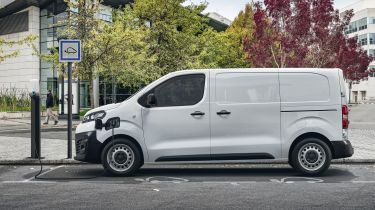How to run a zero-emissions van
Looking to save money by purchasing a zero-emissions electric van? Read these tips before heading to the dealer

If you run a business or work for a company, and you use a van that covers most of its miles in town, then now could be the time to switch to electric. Gone are the days of slow, sluggish electric milk floats; the latest zero-emissions vans are quieter, quicker and more refined than their petrol or diesel counterparts.
For now, electric vans are best suited to short trips in urban environments, but if you can charge them up overnight or on the street during the day, your business could save a fortune on tax and other running costs.
Is an electric van right for you?
If you'll use the van for work purposes, think carefully about the kind of daily driving you do. How many miles do you cover on average and do you drive mostly on motorways or in city centres? An electric van will be ideal if your daily mileage is low and mainly done in town or areas with lots of public charging points. Some electric vans have barely a 100-mile real-world range, although newer models are breaking the 200-mile barrier. Be aware, however, that a fully loaded van won't return as much range as an empty one.
Where can you charge an electric van?
Having a van with a full charge each morning will be important to those wanting to minimise range anxiety during the working day. Otherwise, you may have to waste precious work hours recharging your van. An overnight charge, done either at home or work, is the best approach.
This does mean you need to have the space and facilities to do so. You might also have to invest in a home wallbox charger, which will take around six to eight hours to charge an electric van. Most modern electric vans come with rapid-charging capability, which allows you to use public charging points to get a decent slug of energy into the battery in 30-45 minutes or so.
Consider payloads and servicing
Another key consideration when running a zero-emissions van is payload. Most electric vans currently have pretty much the same cargo volume as conventional vans. However, because they tend to weigh more, they're often not able to carry the same weight. Also note that the more you carry, the more it'll affect the range of your van.
Benefits of running a zero-emissions van
One of the big benefits of electric vans is their low running costs. In general, an electric van will cost around 3p per mile to run, while a conventional van costs around 12p per mile. Of course, this depends largely on how and where you charge your vehicle – charging overnight on an off-peak electricity tariff is far cheaper than using one of the many 50 or 100kW public rapid chargers dotted around the country.
You'll not only save on fuel, but also on vehicle tax, as electric vans are VED-exempt. If you’re buying a new van, you should also be eligible for the plug-in van grant, which can slash thousands off the purchase price. Furthermore, you'll also save on fees like the London Congestion Charge, which now costs £15 per weekday for any vehicle emitting CO2. That’s a massive saving if you regularly drive in and out of the capital for work.
Most Popular

EV Deal of the Day: Dacia Spring is amazingly good value at £116 per month


